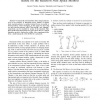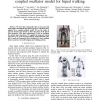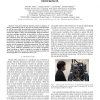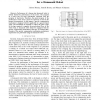IROS
2006
IEEE
13 years 10 months ago
2006
IEEE
— A humanoid robot should be able to keep its balance even in the presence of disturbing forces. Studies of human body reaction patterns to sudden external forces are useful to d...
IROS
2006
IEEE
13 years 10 months ago
2006
IEEE
— Humanoid robots are routinely engaged in tasks requiring the coordination between multiple degrees of freedom and sensory inputs, often achieved through the use of sensorymotor...
IROS
2006
IEEE
13 years 10 months ago
2006
IEEE
— A motion planner of emergency stop must make an operating humanoid robot to a stationary state under the emergency signal. It plays an important role in prevention of falling o...
ICRA
2006
IEEE
13 years 10 months ago
2006
IEEE
— We show that a humanoid robot can step and walk using simple sinusoidal desired joint trajectories with their phase adjusted by a coupled oscillator model. We use the center of...
ICRA
2006
IEEE
13 years 10 months ago
2006
IEEE
— As navigation autonomy becomes an increasingly important research topic for biped humanoid robots, efficient approaches to perception and mapping that are suited to the unique...
ROMAN
2007
IEEE
13 years 10 months ago
2007
IEEE
Robot Programming by Demonstration (RbD) covers methods by which a robot learns new skills through human guidance. In this work, we take the perspective that the role of the tea...
ROMAN
2007
IEEE
13 years 10 months ago
2007
IEEE
— Interaction between humans involves a plethora of sensory information, both in the form of explicit communication as well as more subtle unconsciously perceived signals. In ord...
IROS
2007
IEEE
13 years 10 months ago
2007
IEEE
— Performance of a human size humanoid robot is strictly limited by performance of the motor. The progress of a motor has not been remarkable compared with the progress of electr...
IROS
2007
IEEE
13 years 10 months ago
2007
IEEE
— For humanoid robots to fully realize their biped potential in a three-dimensional world and step over, around or onto obstacles such as stairs, appropriate and efficient appro...
IROS
2007
IEEE
13 years 10 months ago
2007
IEEE
Abstract— We propose to improve the locomotive performance of humanoid robots by using approximated biped stepping and walking dynamics with reinforcement learning (RL). Although...




